The semiconductor industry powers modern electronics, from smartphones to AI systems. These tiny semiconductor components are the backbone of today’s digital world, enabling the functionality of countless electronic devices and driving innovation across various sectors. With a focus on meeting the rising global demand for semiconductor solutions, Vietnam is poised to become a major semiconductor production hub in Southeast Asia. As more global tech investors look toward Asia, many are exploring company incorporation in Vietnam to tap into the country’s emerging semiconductor ecosystem.
This article explores the global semiconductor industry, with a focus on the opportunities and rapid growth in Vietnam’s market. We’ll discuss key players, government support, challenges, and future prospects.
Vietnam’s Semiconductor Industry Overview
According to Statista Market Insights, Vietnam’s semiconductor industry is anticipated to achieve a compound annual growth rate (CAGR) of 11.6% from 2023 to 2027, reaching US$31.28 billion by 2027. This rapid expansion is not just a fleeting trend but a clear indication of Vietnam’s strategic importance in the global semiconductor supply chain. The country has emerged as a critical hub, especially in the areas of assembly and testing, which are vital components of the semiconductor market. This positioning is crucial as the world increasingly relies on semiconductor devices in everyday electronic gadgets and advanced technologies.
The growth of Vietnam’s semiconductor exports has been nothing short of impressive. By June 2023, Vietnam ranked fourth among Asian nations in semiconductor exports to the United States. This surge is driven by both local and foreign semiconductor companies, which have contributed significantly to the country’s export volumes. The increasing global demand for electronic devices has been a major catalyst for these investments, providing a robust foundation for the semiconductor industry’s growth.
Investments in Vietnam’s semiconductor industry extend beyond assembly and testing. Since 2015, the market has diversified, expanding into manufacturing and raw material procurement.
Key Players in Vietnam’s Semiconductor Industry
The semiconductor industry in Vietnam is populated by several major players that are driving the industry’s growth. In the city of Ho Chi Minh, companies like Synopsys, Marvell, FPT, and CMC are at the forefront, contributing to the city’s reputation as a burgeoning semiconductor hub.
These companies are not only engaged in semiconductor design but also in various aspects of semiconductor manufacturing, making significant strides in the global semiconductor market.
Since 2015, Vietnam’s semiconductor projects have diversified beyond chip and software design. This expansion includes manufacturing semiconductor components and sourcing raw materials, which are essential for the industry’s growth. The diversification is a testament to Vietnam’s evolving semiconductor industry ecosystem, as it aims to cover all facets of the semiconductor supply chain, from design to finished products.
Regional policies in cities like Ho Chi Minh City and coastal city of Da Nang have been tailored to provide specific support for semiconductor investments. These policies are designed to attract semiconductor companies and create a conducive environment for their operations. The support from local governments ensures that the semiconductor industry in Vietnam can thrive and compete on a global scale.
Read Related: 9 Reasons to Choose Ho Chi Minh City in Vietnam to Launch Business
Government Initiatives Supporting the Semiconductor Sector
According to a strategy outlined in September 2024, the country aims to become a global center for semiconductor human resources and establish foundational capabilities in research, design, production, packaging, and testing by 2030.
This plan includes attracting foreign direct investment to establish at least 100 design enterprises, one small-scale semiconductor chip manufacturing plant, and 10 packaging and testing plants, with the semiconductor industry’s revenue expected to exceed US$25 billion per year by 2030
The government has introduced a range of cost-based incentives to achieve these goals. These incentives include grants for research and development, significant tax deductions for semiconductor businesses, and simplified administrative procedures for establishing semiconductor companies. Such measures are designed to create a favorable investment climate and encourage both local and foreign companies to invest in Vietnam’s semiconductor industry.
Establishing the National Steering Committee for Semiconductor Industry Development marks another critical step. It oversees and coordinates challenges related to the industry’s growth, ensuring Vietnam remains competitive in the global semiconductor market.
With these initiatives, the Vietnamese government is driving innovation and supporting the semiconductor industry’s growth, aiming to position Vietnam as a key player in the global semiconductor supply chain.
Read More: Maximize Benefits: A Complete Guide to Tax Incentives in Vietnam for Foreign Companies
International Partnerships Enhancing Vietnam’s Semiconductor Ecosystem
International partnerships significantly enhance Vietnam’s semiconductor ecosystem. Strategic partnerships with leading semiconductor nations like the U.S., Japan, and South Korea advance Vietnam’s semiconductor capabilities. These collaborations bring advanced technologies and expertise to Vietnam, essential for developing its semiconductor industry.
The U.S. Department of State has allocated US$13.8 million to enhance semiconductor capabilities and support workforce development for 8 nations, including Vietnam. This funding strengthens the global semiconductor supply chain and ensures its resilience. Such support is pivotal for Vietnam in building a robust semiconductor ecosystem that can compete globally.
Establishing the Vietnam Semiconductor Innovation Network fosters collaboration with international partners. The network connects Vietnamese semiconductor companies with global players, facilitating knowledge and expertise exchange. By leveraging these international partnerships, Vietnam is enhancing its semiconductor ecosystem and positioning itself as a vital player in the global semiconductor market.
Foreign Direct Investment (FDI) in Vietnam’s Semiconductor Industry
Foreign direct investment (FDI) plays a critical role in Vietnam’s semiconductor industry, accounting for around 90% of the market. Companies like Hana Micron, Amkor Technology, Synopsys, and Marvell are significant contributors to this investment. These companies bring capital, advanced technologies, and expertise, crucial for developing Vietnam’s semiconductor industry.
For instance, Intel operates the largest integrated circuit assembly and test facility in Vietnam. Renesas Electronics has established its largest design center outside Japan in Ho Chi Minh City, highlighting the city’s importance as a semiconductor hub. Infineon has also opened a product development office in Vietnam’s Capital City Hanoi, focusing on circuit design and testing, further boosting the industry’s capabilities.
Future plans by companies like Marvell, aiming to make Vietnam its third-largest design center after the US and India, and the state-of-the-art OSAT factory by Amkor in Bac Ninh province, underscore significant growth and employment potential in the sector. Substantial investments by foreign companies position Vietnam as an attractive destination for semiconductor production and innovation.
Investing in Vietnam’s Semiconductor Industry? Check out InCorp Vietnam’s Incorporation Services
Developing Human Resources for the Semiconductor Industry
A skilled workforce is essential for the sustained growth of Vietnam’s semiconductor industry. The Vietnamese government aims to train 50,000 semiconductor engineers by 2030 through initiatives like the Vietnam Semiconductor Hub for Education. This effort is part of a broader goal to equip 50,000 workers with university-level or higher qualifications for various roles in the semiconductor value chain.
The government plans to modernize four national shared semiconductor laboratories at nearly 20 higher education institutions and provide specialized training for 1,300 lecturers to enhance educational quality. These investments in education and training are crucial to developing a skilled semiconductor workforce that can meet the industry’s growing demands.
However, the industry still faces challenges, such as a significant shortage of skilled labor in semiconductor design and advanced manufacturing. Addressing this shortage is vital for Vietnam to fully realize its potential as a major player in the global semiconductor market. Focusing on workforce development and supportive public policies, Vietnam aims to strengthen its semiconductor industry and ensure global competitiveness.
Read More: Vietnam’s Workforce: High Demand Skills and Advice for Business in 2025
Challenges Facing Vietnam’s Semiconductor Industry
Despite the promising growth, Vietnam’s semiconductor industry faces several challenges. A pressing issue is the technological gap compared to more developed semiconductor hubs. This gap hinders Vietnam’s transition from assembly and testing to high-value semiconductor production, crucial for long-term competitiveness.
Vietnam also faces intense competition from established leaders in the semiconductor industry, such as Taiwan and South Korea. These countries’ advanced supply chains and skilled workforces make it challenging for Vietnam to compete equally. The competition underscores the need for Vietnam to continuously innovate and enhance its semiconductor capabilities.
Amidst these challenges, Vietnam’s initiatives are part of a broader effort to ensure a resilient global semiconductor supply chain. Addressing these hurdles and leveraging its strategic advantages, Vietnam can position itself as a key player in the global semiconductor market. Overcoming these challenges will require sustained effort and collaboration between the government, industry players, and international partners.
Read More: Top 10 Challenges of Doing Business in Vietnam: Notes and Advice for Foreigners
Future Prospects for Vietnam’s Semiconductor Industry
Looking ahead, the future prospects for Vietnam’s semiconductor industry are promising. The market is projected to reach US$18.2 billion by 2024, with a compound annual growth rate of 11.5%, potentially hitting US$31.4 billion by 2029. This remarkable growth is driven by the rising global demand for electronics and advancements in technology.
Key factors contributing to this growth include Vietnam’s strategic location, government support, rich raw materials, and skilled labor force. These elements make Vietnam attractive for semiconductor companies looking to establish or expand operations. The influx of multinational firms, with around 40 major companies investing in Vietnam, highlights the country’s potential as a significant production hub.
As Vietnam attracts substantial investments and develops its semiconductor capabilities, it is set to become a formidable player in the global semiconductor industry. The future holds significant growth opportunities for Vietnam’s semiconductor market, driven by innovation and strategic investments.
Key Takeaways
- Vietnam’s semiconductor market is projected to achieve a compound annual growth rate (CAGR) of 11.6% from 2023 to 2027
- The Vietnamese government aims to attract US$10 billion in investments for semiconductor manufacturing by 2025, supported by various incentives and initiatives.
- Challenges such as a technological gap and competition from established leaders like Taiwan and South Korea must be addressed for Vietnam to enhance its semiconductor capabilities and global competitiveness.
How InCorp Vietnam can Help?
InCorp Vietnam offers comprehensive support for businesses and investors looking to enter Vietnam’s rapidly growing semiconductor industry. With deep expertise in market entry strategies, InCorp Vietnam helps clients navigate the complexities of establishing a foothold in this high-potential sector. Our consultants assist with securing necessary permits, understanding government incentives, and ensuring compliance with local regulations.

clients worldwide

professional staff

incorporated entities in 10 years

compliance transactions yearly
Learn the Right Setup for Business
Expansion in the Vietnam
Frequently Asked Questions
Does Vietnam make semiconductors?
- Yes, Vietnam plays a growing role in the global semiconductor industry, primarily in assembly, testing, and packaging operations. While the country does not yet produce semiconductor chips at scale, major global companies like Intel have established manufacturing and testing facilities in Vietnam, and the government is actively promoting investment in higher-value segments of the semiconductor supply chain.
What Is Semiconductor Industry
- The semiconductor industry designs and manufactures semiconductor devices, such as microchips and transistors, which are essential components in electronic devices. It plays a critical role in powering technologies like computers, smartphones, and advanced machinery.
Who is the biggest semiconductor company?
- As of 2024, the biggest semiconductor company by revenue is Taiwan Semiconductor Manufacturing Company (TSMC). TSMC is the world's largest contract chipmaker, producing semiconductors for major global firms such as Apple, AMD, and Nvidia.
Why is the semiconductor industry struggling?
- The semiconductor industry is struggling due to a combination of supply chain disruptions, geopolitical tensions, and fluctuating demand. COVID-19 caused manufacturing delays and logistics challenges, while increased demand from multiple sectors created shortages. Additionally, trade restrictions and export controls, particularly between the U.S. and China, have impacted global supply flows and investments. Market cyclicality and overstocking after previous shortages have also led to recent inventory corrections.





